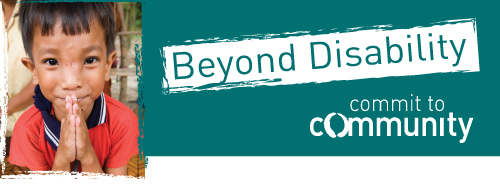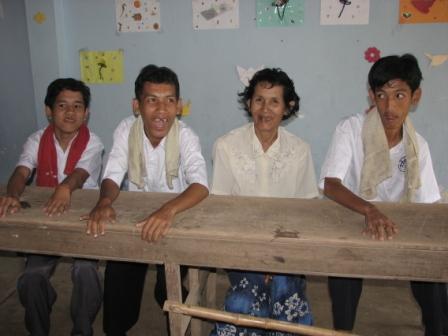Scientists, nutritionists, natural therapists and health practitioners have long known the health benefits of cinnamon—but studies continue to reveal the spice as a health elixir for a wide range of medicinal uses.
 Recent studies have created excitement in the field of diabetic treatment, weight loss, treatment of some cancers and as an anti-inflammatory to combat arthritis and heart disease.
Recent studies have created excitement in the field of diabetic treatment, weight loss, treatment of some cancers and as an anti-inflammatory to combat arthritis and heart disease.
Cinnamon has been used for thousands of years for the treatment of ailments. Chinese medicine, for example, uses the cassia variety to treat colds, diarrhea, flatulence, nausea and menstrual cramping. It is also used to improve circulation and to boost energy and vitality.
In Ancient Egypt, cinnamon was used in the embalming process due to its ability to inhibit bacterial growth and to fight certain bacteria. The Egyptians also used cinnamon for medicinal purposes.
In Ayurveda medicine, cinnamon is used in the treatment of diabetes, colds and indigestion. It is also believed to improve and aid digestion of dairy foods and fruit.
‘True’ Cinnamon
Cinnamon is derived from the bark of the tree Cinnamon Verum, native to Sri Lanka, the former Ceylon. This ‘Ceylon cinnamon’ is known as ‘true’ cinnamon. It is lighter in colour and softer in texture. Ceylon Cinnamon sticks resemble filled cigars, whereas the cheaper version, described below, is more solid and hollow.
Cassia, a related spice also derived from tree bark, is often sold as cinnamon and is the common form found in supermarkets. It is also known as ‘Chinese cinnamon’ and originates from Burma. Cassia is cheaper and less refined, being from a coarser bark, than Ceylon cinnamon. It is also believed to not have the full health benefits of true cinnamon and contains a toxin, coumarin, which, in high doses, causes liver and kidney damage. The point at which coumarin is toxic to humans is unknown. Ceylon cinnamon contains only a minute amount of coumarin by comparison and therefore doesn’t impose a risk.
Cinnamon Therapy
Studies continue to reveal the health benefits of cinnamon. The following are the most common uses and benefits of the spice and are based on studies, research, trials and natural therapy uses.
Treatment of Type 2 Diabetes
Cinnamon regulates blood/sugar levels.
The first cinnamon/diabetes study undertaken on humans, was published in 2003 in the medical journal Diabetes Care. The study involved 60 Type 2 diabetics who consumed daily cinnamon in pill form, with amounts equivalent to ¼ to 1 teaspoon. The group was divided into three, with each group given a different dosage.
Remarkably, the study revealed, after 40 days, a significant reduction in fasting blood glucose levels, ranging from 18 to 29% for the three dosages; a reduction in triglycerides, ranging from 23 to 30%; a reduction in LDL (bad) cholesterol of 7 to 27% and a reduction in total cholesterol of 12 to 26%. HDL, or good cholesterol, was found to not be affected by cinnamon intake.
Anti-inflammatory Agent
Studies from the United States Department of Agriculture reveal that cinnamon prevents inflammation. The antioxidants found in cinnamon have been found to have anti-inflammatory effects, beneficial to arthritis sufferers (see below), and those with cardiovascular disease.
Treatment of Arthritis
Cinnamon has been found to significantly reduce the pain and discomfort associated with arthritis and could prevent arthritis onset.
A study undertaken by Copenhagen University, combined a daily dose of half a teaspoon of cinnamon with 1 tablespoon of honey, to reveal significant pain relief to arthritis sufferers after only one week. Within a month, mobility was vastly improved and the patients could walk without pain.
Treatment of Alzheimer’s
Alzheimer’s is a neurodegenerative disease sometimes referred to as ‘Type 3 Diabetes’ due to scientists finding a link between inflammation and insulin function in those with the disease. Studies undertaken at the United States Department of Agriculture are working with this link to determine the effectiveness of cinnamon for Alzheimer’s sufferers. It is believed that cinnamon’s ability to boost insulin function and block inflammation will aid in fighting the disease.
Treatment of Cancer
The U.S Department of Agriculture in Maryland published a study which revealed that cinnamon reduces the rate at which cancer cells multiply in the forms of leukaemia and lymphoma cancers.
The combination of calcium and fibre, found in cinnamon, aids in the removal of bile, thereby assisting in the prevention of colon cancer.
Memory and Cognitive Function
Improvement in memory and cognitive function was revealed in a study where patients were only required to smell the aroma of cinnamon on a daily basis.
Doctors at Atlantic Health in New Jersey believe that cinnamon boosts alertness by increasing blood flow to the brain.
Treatment of Yeast Infections
Studies have shown that consumption of cinnamon can heal medication-resistant forms of yeast infections.
Improvement of Circulation
Cinnamon has an anti-clotting effect on the blood due to its blood-thinning nature. This, in turn, boosts energy and vitality.
Research on cinnamon combined with honey has been found to boost vitality and is especially good for combating afternoon fatigue. Mix a tablespoon of honey in hot water with ¼ teaspoon of cinnamon. Drink this daily at the time fatigue strikes and energy is said to increase within a week. For more remedies combining honey and cinnamon see:
Anti-Bacterial
A Kansas University study revealed, by adding trace amounts of cinnamon to unpasteurised juice, that the spice has the ability to fight e-coli. Studies have also revealed that cinnamon acts as a preservative, inhibiting bacterial growth when added to food.
Much earlier, as reported in Food Science journal in 1974, scientists discovered that as little as 20 milligrams of cinnamon per millilitre of a broth made from yeast extract and sucrose, inhibited growth of toxic mould by 97 to 99 per cent.
Nutritional Value
Cinnamon is a high source of calcium, iron, manganese and fibre.
Weight Loss
Cinnamon should be included as an integral part of any weight loss regime due to the following qualities:
- Reduction of blood sugar levels. The maintaining of healthy blood sugar levels is integral to weight loss as increases mean fat conversion for any excess.
- Maintains insulin levels, which goes hand-in-hand with the maintenance of blood sugar levels and in its importance for weight loss. The U.S. Department of Agriculture found that cinnamon’s effect in improving insulin function meant direct improvements in weight and lean body mass.
- Speeds up metabolism through the occurrence of a chemical reaction needed for digestion of cinnamon.
Treatment of Polycystic Ovarian Syndrome
The U.S. Department of Agriculture is undertaking research into the effectiveness of cinnamon for women with Polycystic Ovarian Syndrome, a disease caused by insulin resistance and sensitivity. This causes unnatural hormone levels making pregnancy difficult to achieve, as well as a number of other symptoms including severe weight gain.
Cholesterol Levels
Although the diabetic study published in 2003 revealed a reduction in bad cholesterol levels in the blood, other studies have been inconclusive. There are a number of reasons for this including the dosage type and quantity. Also, it is argued that most of these studies used the cheaper form of Cassia cinnamon.
A study presented at Experimental Biology 2006, undertaken by the research team at the U.S. Department of Agriculture, however, backs up the hypothesis that cinnamon does lower cholesterol, as well as triglycerides and glucose.
Cold and Influenza Treatment
Cinnamon has been found to strengthen patients with severe cold and/or influenza symptoms. It is warming and also boosts immunity. Cinnamon has been used in Chinese medicine for the treatment of cold and ‘flu for thousands of years.
Cinnamon improves circulation and boosts vital energy needed to overcome viral ailments such as the common cold. A hot cinnamon drink stimulates circulation, induces sweating and can reduce fever and congestion. Oil of cinnamon is used in herbal medicine and is inhaled to aid healing from chest infections and colds.
Digestive Disorders
Cinnamon aids indigestion and relieves bloating and flatulence.
Other treatments
Cinnamon is used to treat skin conditions such as eczema, acne and other infections of the skin. It is also used in the treatment of asthma and for the relief of anxiety and nervous tension; excessive menstruation; bladder infections; and bad breath. Treatments are often cinnamon mixed with honey, with the properties of each contributing to healing.
How to regularly consume cinnamon
To enjoy the many and varied health benefits of cinnamon, simply sprinkle on your favourite cereal; over fresh cut or canned fruit; in or over reduced fat, healthy varieties of cakes, biscuits, muffins, bars and slices; over yoghurt or low-fat custard; over cholesterol-free, buttered wholegrain toast; over pancakes; and as a flavour enhancer in your favourite coffee, hot chocolate or tea. Also, the common ingredient of Chai tea is cinnamon.
Make Cinnamon Tea by steeping a cinnamon quill, broken up, in a cup of boiling water. Continue adding boiling water to the cup throughout the day, as the cinnamon will continue to infuse flavour.
Important to note
- Seek medical advice before self-medicating with cinnamon if you are currently taking diabetic medication, blood thinners or anti-clotting medication.
- Pregnant women should avoid cinnamon for the duration.
- Be aware of the liver and kidney risk associated with high doses of the commonly found Cassia cinnamon.
Where to purchase Ceylon cinnamon
There are a number of sources for Ceylon cinnamon online. These are two I have chosen for their available products, pricing and information.
And cinnamon supplements, or cinnamon in capsule form,
It is argued that cinnamon in capsule form is more beneficial as the healing properties go straight to work without being effected by saliva, which can affect the powdered version.
How to differentiate between Ceylon and Cassia Cinnamon
The following site tables the differences between Ceylon and Cassia cinnamon and includes photographs of the quills and powdered forms.
References
- http://www.healthdiaries.com/eatthis/10-health-benefits-of-cinnamon.html
- http://altmedicine.about.com/od/cinnamon/a/cinnamon.htm
- http://cholesterol.about.com/od/naturalalternatives/a/cinnamon.htm
- http://www.medicalnewstoday.com/releases/41026.php
- http://www.naturalnews.com/030318_cinnamon_colds.html
- http://www.herbalremediesinfo.com/CINNAMON.html
- http://www.earthclinic.com/Remedies/honey.html









